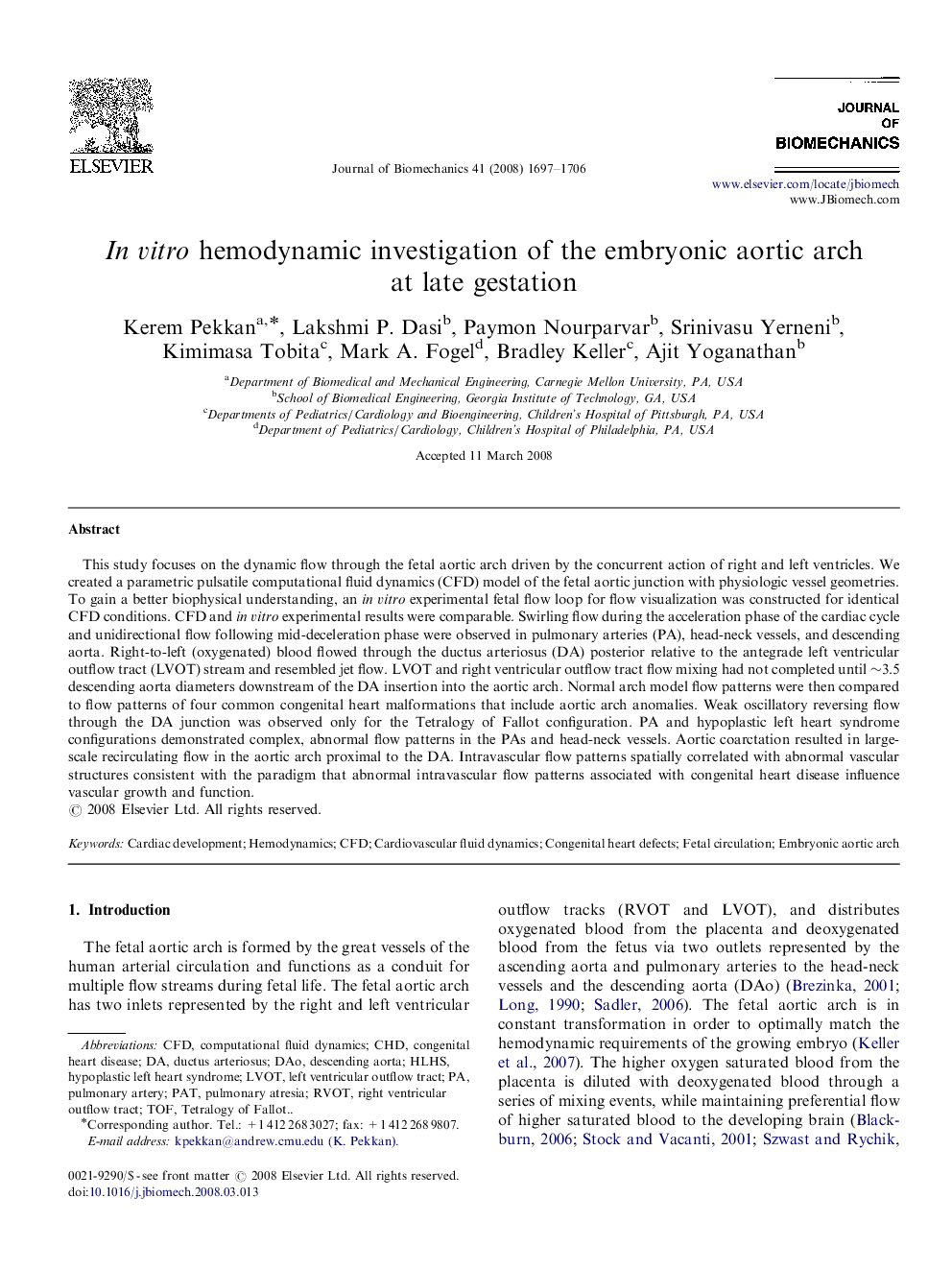| Article ID | Journal | Published Year | Pages | File Type |
|---|---|---|---|---|
| 873115 | Journal of Biomechanics | 2008 | 10 Pages |
This study focuses on the dynamic flow through the fetal aortic arch driven by the concurrent action of right and left ventricles. We created a parametric pulsatile computational fluid dynamics (CFD) model of the fetal aortic junction with physiologic vessel geometries. To gain a better biophysical understanding, an in vitro experimental fetal flow loop for flow visualization was constructed for identical CFD conditions. CFD and in vitro experimental results were comparable. Swirling flow during the acceleration phase of the cardiac cycle and unidirectional flow following mid-deceleration phase were observed in pulmonary arteries (PA), head-neck vessels, and descending aorta. Right-to-left (oxygenated) blood flowed through the ductus arteriosus (DA) posterior relative to the antegrade left ventricular outflow tract (LVOT) stream and resembled jet flow. LVOT and right ventricular outflow tract flow mixing had not completed until ∼3.5 descending aorta diameters downstream of the DA insertion into the aortic arch. Normal arch model flow patterns were then compared to flow patterns of four common congenital heart malformations that include aortic arch anomalies. Weak oscillatory reversing flow through the DA junction was observed only for the Tetralogy of Fallot configuration. PA and hypoplastic left heart syndrome configurations demonstrated complex, abnormal flow patterns in the PAs and head-neck vessels. Aortic coarctation resulted in large-scale recirculating flow in the aortic arch proximal to the DA. Intravascular flow patterns spatially correlated with abnormal vascular structures consistent with the paradigm that abnormal intravascular flow patterns associated with congenital heart disease influence vascular growth and function.
